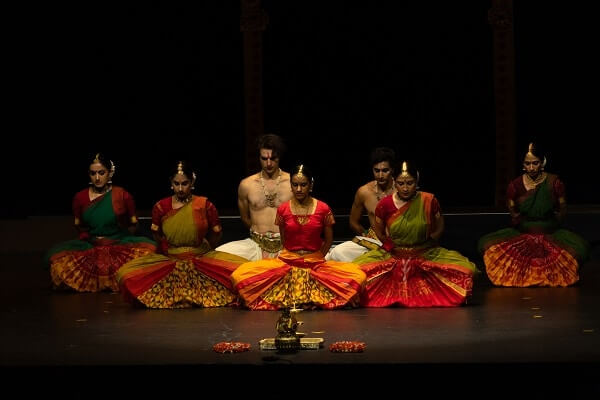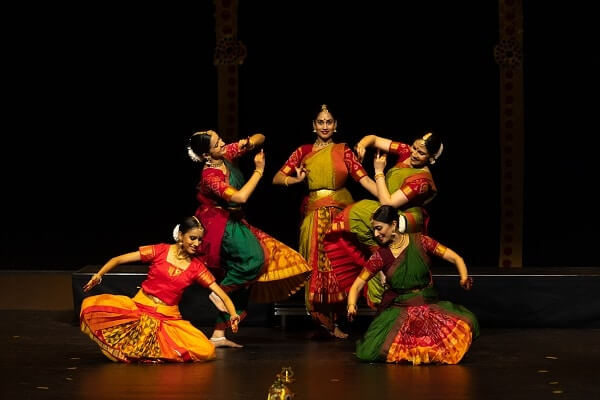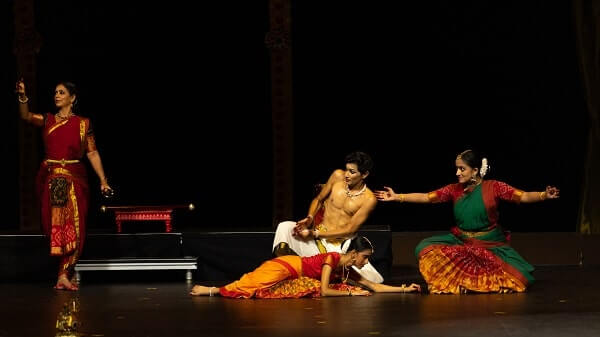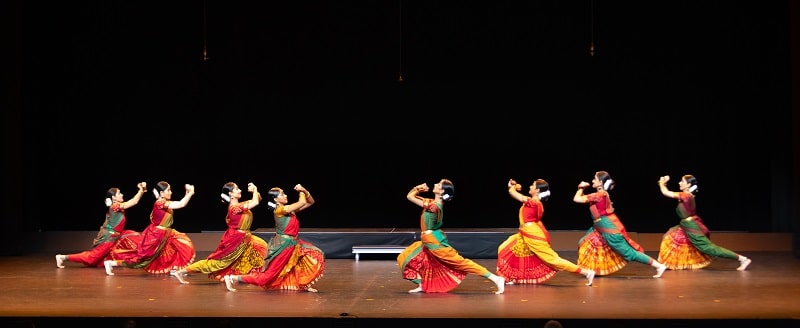The legend of Kannagi, well-known for its many lessons, was brought to life yet again in Sydney in Kannagi Enbathen Peyare.
In its latest Sydney retelling – by Izerobzero and Hamsa Venkat’s Samskriti School of Dance – its core message of the power of the common people shone through brilliantly.
Kannagi is the protagonist in the 2000-year-old Tamil epic Silappadikaram (The Tale of an Anklet) by poet Ilango Adigal.
An ordinary woman, she turned quite extraordinary when confronted with injustice, her entire society suffering the consequences of her actions.
Forgiving her husband Kovalan for his infidelity, Kannagi not only took him back, but also offered to set him up again by offering her anklet to raise funds. In an unexpected turn, the jewel was mistaken for the one owned by the queen of the land. Theft was alleged, and Kovalan was beheaded. Kannagi was left to mourn alone and prove her husband’s innocence.

Should Kannagi be referred to as ‘that unfortunate woman‘?
“No,” was the statement of the Sydney performance Kannagi Enbathen Peyare (Kannagi is the name of the game).
Hamsa Venkat chose here to look at the epic not from a single lens but a varied one to present the internal landscape of a dramatic tale. It is the story of many a woman. However, a spirited woman such as Kannagi questions and challenges society. Is there no justice for me? Am I only to suffer?
That was the tone of the dance drama at the Riverside Theatre.

The performance was given the shape of a traditional dance recital including alaripu, jathiswara, shabdam, varnam, padam and thillana. Each of these items had at its core the main theme of Kannagi – the importance of justice. The perspective presented was that often justice fails, and it is not about condemning the individual, but digging deep to find the root cause of the evil and exterminating it. Often times the English commentary by Aishwarya Rao accompanying the happenings on stage heightened understanding and enjoyment.
Lead dancer Hamsa stood proud as Kannagi, a woman in grief. That turned into anger at times. The sense of despair was loud and clear at Ketparilaro (Is there nobody to hear me?)
READ ALSO: Kannagi wins judges’ nod at Blake Art Prize 2021
The scenes of her wedding with Kovalan (Raphael Speyer), and the beheading of Kovalan were absolute highlights.
Govind Pillai as writer Ilango Adigal, the young dancer Vishakha Iyer in multiple roles of Ganesha the hunted bird, Sowmya Sriram as the hawk, and Vidya Gokul as Madhavi the mistress, stood out for their presentations.
The town scene where people indulged themselves in various chores appropriately transported the audience back in history.
At the front end were a chorus of dancers who served as message bearers. What does one say of those lovely faces so eager to dance!

Writer Sumathy Ramesh, well-known in Sydney as a connoisseur of music, did a splendid job of composing the lyrics, drawing from the concepts and ideas in the epic. The items were set to music by many of the leading Carnatic musicians of Sydney.
The director Hamsa interpreted the story correctly and holistically when she brought out that Madhavi, the mistress, had been equally wronged as Kannagi, making the point that women are often taken for granted. However, they had the courage to rise above those obstacles to stand tall and strong. In the production, they both lit the lamp of hope.
Amongst the dance numbers, Varnam, the longest item, with all the ingredients of nritya and abhinaya was a treat to watch. So was the Thillana.
At times, the drama heightened to such a level that one felt as though one was in the Opera House watching a Greek tragedy. When the dance experience is sublime, the details of the performance become not too important. The overall appeal takes over.

The cast of about 12 dancers played multiple roles to bring the story alive. They were helped in their mission no doubt by some lavish choreography. Whether weaving in and out of circles and diagonals, in the ballet-style leaps, and in the acrobatic routines, the effect was always pleasing.
The vocals by Krishna Ramarathinam filled the auditorium with appropriate vibes. His Bhairavi, Thodi and Kambodhi in the varnam, shabdam and padam respectively, were enchanting. Pallavan Nagendrian on mridangam and Vishni Ravindran on veena gave able support. Venkatesh Sritharan was on flute, and Chidambaram R Suresh provided Nattuvanagam.

Special effects in lighting and on stage were used to heighten the experience by Nidhi Panickar and Sudha Kumar.
A great performance, Kannagi Enbathen Peyare has shown that Bharatanatyam in Sydney has finally come of age. Not only is this ancient artform kept alive as we have been saying thus far, it is in fact evolving, progressing in form, and reaching diverse audiences.
Photos: Fotominded
READ ALSO: Hamsa Venkat’s Abhijnanam Shakantulam





